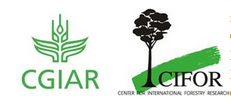CGIAR has published its 'Strategy and Results Framework 2016–2030,' which describes how CGIAR will build on past successes and investments.
The Framework also highlights the need to find innovative solutions to overcome barriers to success, and defines how to take advantage of emerging opportunities.
It outlines CGIAR's three goals, or 'System Level Outcomes (SLOs)': reducing poverty; improving food and nutrition security; and improving natural resources and ecosystem services.
 2 March 2016: CGIAR has published its ‘Strategy and Results Framework 2016–2030,’ which describes how CGIAR will build on past successes and investments. The Framework also highlights the need to find innovative solutions to overcome barriers to success, and defines how to take advantage of emerging opportunities. It outlines CGIAR’s three goals, or ‘System Level Outcomes (SLOs)’: reducing poverty; improving food and nutrition security; and improving natural resources and ecosystem services.
2 March 2016: CGIAR has published its ‘Strategy and Results Framework 2016–2030,’ which describes how CGIAR will build on past successes and investments. The Framework also highlights the need to find innovative solutions to overcome barriers to success, and defines how to take advantage of emerging opportunities. It outlines CGIAR’s three goals, or ‘System Level Outcomes (SLOs)’: reducing poverty; improving food and nutrition security; and improving natural resources and ecosystem services.
For the first goal, reducing poverty, the strategy describes the 2030 targets as: having 350 million more farm households adopt improved varieties, breeds or trees, and/or improved management practices; and helping 100 million people exit poverty. The strategy’s food and nutrition 2030 goals include: increasing the yield rate for major food staples to 2.5% per year; ensuring 150 million more people meet minimum dietary energy requirements; ensuring 500 million more people are not deficient of one or more of the following micronutrients, iron, zinc, iodine, vitamin A, folate and vitamin B12; and reducing by 33% the number of women of reproductive age who are consuming less than the adequate number of food groups.
Regarding improving natural resources and ecosystem services, 2030 targets include: increasing water and nutrient-use efficiency in agro-ecosystems by 20%; reducing agriculturally-related greenhouse gas (GHG) emissions by 0.8 gigatons of CO2 equivalent per year; restoring 190 million hectares of degraded land area; and saving 7.5 million hectares of forest from deforestation.
The strategy also addresses such cross-cutting issues as climate change, gender and youth, policies and institutions and capacity development. It further outlines CGIAR’s research priorities, including: climate-smart agriculture; gender and inclusive growth; genetic improvement; nutrition and health; agricultural systems; and enabling policies and institutions.
The Center for International Forestry Research (CIFOR) has also released its 2016-2026 strategy, which focuses on “stepping up to the new climate and development agenda.” The strategy is the result of 18 months of consultations and sets out CIFOR’s mission, which is to advance human wellbeing, equity and environmental integrity through research, capacity building and engaging in dialogue with all stakeholders. CIFOR’s mission is also to inform policies and practices that affect forests and people. CIFOR’s work is based on three pillars: research for impact; capacity development; and outreach and engagement.
The strategy also elaborates on CIFOR’s six thematic work areas, which are: forests and human well-being; sustainable landscapes and food; equal opportunities, gender, justice and tenure; climate change, energy and low-carbon development; value chains, finance and investments; and forest management and restoration. These work areas are aligned with the Sustainable Development Goals (SDGs). CIFOR’s strategy builds on the SDGs and the Paris Climate Agreement, and defines ways in which CIFOR’s pillars can support these agendas.
CGIAR, a global partnership addressing agricultural research for sustainable development, works to reduce poverty, hunger and major nutrition imbalances, and environmental degradation. It includes almost 10,000 scientists and staff in 96 countries, and 15 research centers that generate and disseminate knowledge, technologies and policies for agricultural development. CIFOR is the forestry research center of CGIAR and is headquartered in Bogor, Indonesia. It maintains three hubs in Nairobi, Kenya, Yaoundé, Cameroon, and Lima, Peru, and has ongoing research in over 50 countries. [CGIAR Strategy and Results Framework 2016–2030] [CIFOR Strategy Website] [CIFOR Strategy 2016-2025] [CIFOR Director General’s Blog]